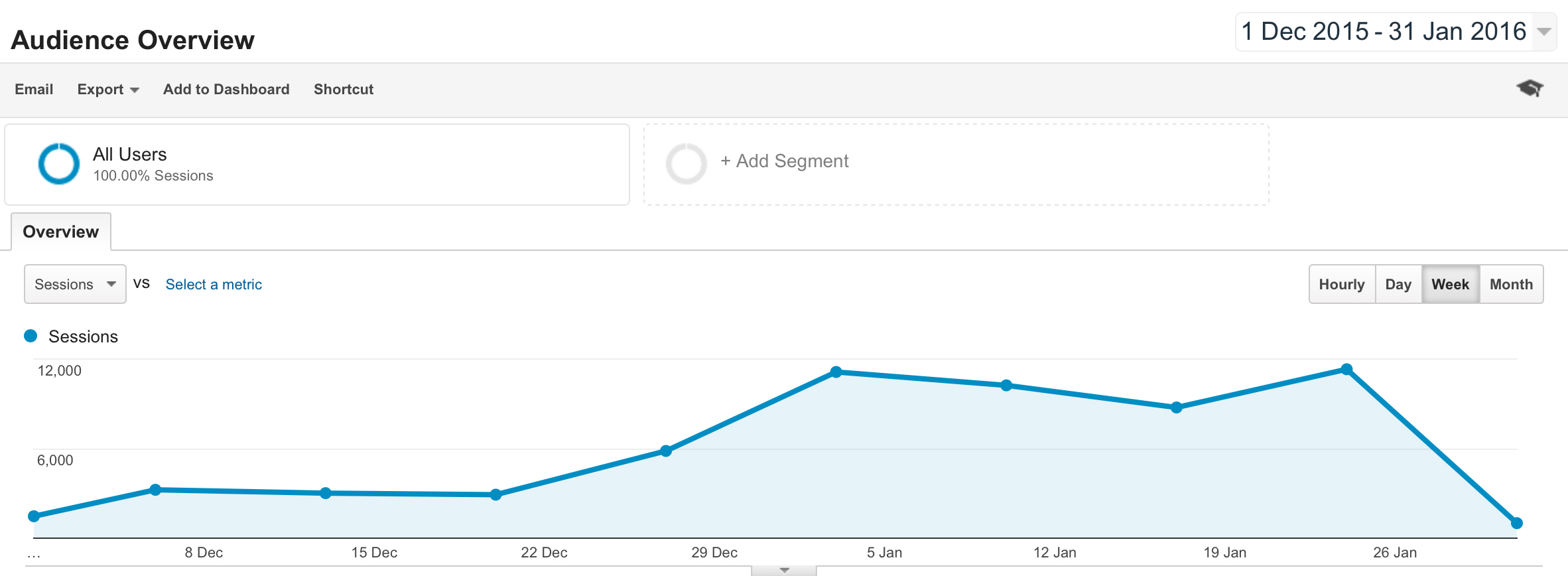ProBlogger: 5 Irrational Fears that Keep Bloggers from Being Successful | |
| 5 Irrational Fears that Keep Bloggers from Being Successful Posted: 02 May 2016 06:00 AM PDT This is a guest contribution from Brian Lang of Small Business Ideas Blog. According to an article in the NY Times, 95% of blogs get abandoned within four months, and blogging has a higher failure rate than even restaurants. Yet, an estimated 172,000+ blogs are started every day. Succeeding with blogging can allow writers to grow their influence and be able to generate income doing what they love. I've found that success in business, blogging and in life comes from having the right mindset. Our mindset dictates how we make decisions and the choices we make are often the difference between succeeding and failing. The fears that hold us backOne thing that bloggers must do to succeed is to develop the right mindsets and overcome fears that hold us back. Here are some of the irrational fears that keep bloggers from being successful. 1. Fear of hard workBlogging is a lot of hard work and it was a lot more work than I anticipated when I first got started. I found that I had to spend more time on content creation and promotion than I initially anticipated, especially if I wanted my blog to stand out. Doing SEO, building relationships with other bloggers and product creation are just a few other things that bloggers have to spend time on. A lot of people start blogs thinking it will be easy. But once people realize that blogging is hard work, many people get overwhelmed and quit. People automatically gravitate towards laziness. We tend to like things that are simple, easy and fun. But successful people are able to stay disciplined and put in the required time and hard work to reach their goals. A couple of ideas to help you stay focused include meeting up with other local bloggers and forming a mastermind group or getting a blogging mentor or coach. Begin surrounded by like-minded individuals can help. Tip: Be willing to commit to your blog's success and schedule time to work on blogging regularly. It is a lot of hard work up front, but blogging can be very rewarding over the long term. 2. Fear of competitionA lot of people start their blogs thinking that readers will automatically find them. But new bloggers soon realize that blogging is not that easy and that there's a lot of competition. Comparing yourself to the competition can be intimidating. Some influential bloggers have spent years building up their audience, so the required time commitment can be scary. Or sometimes newbie bloggers might feel like the competition is more skilled at content creation and promotion. Successful bloggers know that they have a lot of value to offer to the world. And even though competition exists, a good blogger can always find his or her audience. Tip: Don't obsess over the competition and remember that you will keep getting better with time. Just commit to growing your blog and learning as you go along. 3. Fear of sellingA lot of bloggers think they can make money with their blog by just throwing up some ads or inserting some affiliate links into the articles. While this approach can work, it often requires a ton of traffic. Many successful bloggers sell products, services or their own courses. Selling products and services might be more work, but it's an effective way to monetize your blog even if you have a smaller audience. Some bloggers have a fear of selling. Many bloggers have a value creation mindset and give away a lot of information for free. The idea of charging money for information can seem "alien" to them. Selling is an entirely different skill than blogging, but it's an important skill for bloggers to learn. And bloggers need to understand that sometimes your readers want to buy from you. Tip: Spend some time learning about selling and developing that skill. Try to determine what is really valuable to your audience and try to sell something to them on occasion. As you grow your audience, you may find that your readers will reach out to you and ask to buy products or services from you, even if you aren't selling anything yet. 4. Fear of changeSometimes people fear change, even if the likely result is positive. People often feel safest staying inside their comfort zone and continuing to do what they've been doing. Some people actually fear becoming immensely successful. They fear that being a successful blogger may change who they are. Or they fear that they might get overwhelmed with emails every day or that it will be hard to maintain the quality of the blog to keep readers happy. But we need change if we want to make progress in our lives. Ultimately, we have to trust that change is the only way for us to move closer to where we want to be. Tip: Accept that your core values will remain the same, even if you become a successful blogger. Remember that you will also be able to adjust to any changes in the future, just as you adjusted to changes in the past. 5. Fear of failureOne big concern that holds bloggers back is the fear of failure, especially when they are just getting started. What if we spend a lot of time on our blog, but it fails? What if we can't get enough traffic? What if we figure out how to get traffic, but can't make money blogging? Or what if other readers just don't like my writing or don't resonate with what I have to say? Successful people often reframe failure as a stepping stone towards success. Failure is only temporary and if we keep trying and adapting our approach, eventually we will succeed. Tip: Don't be afraid of failing and know that failure is only temporary. Think of failure as a learning experience that will move you closer to success. If you are struggling with blogging or haven't even gotten started yet, take a close look at the above fears. Are you guilty of any of the above? What holds you back and how can you overcome it? Brian Lang is a digital marketing consultant and the founder of Small Business Ideas Blog, where he shares business tips and experiments with digital and content marketing techniques. If you want to learn more about how to market efficiently online, be sure to download his free resource, 50+ Tools & Resources to Grow Your Blog. The post 5 Irrational Fears that Keep Bloggers from Being Successful appeared first on ProBlogger. Comments
Related Stories |
| You are subscribed to email updates from ProBlogger. To stop receiving these emails, you may unsubscribe now. | Email delivery powered by Google |
| Google Inc., 1600 Amphitheatre Parkway, Mountain View, CA 94043, United States | |




 This is a guest contribution from Will Nicholls.
This is a guest contribution from Will Nicholls.




